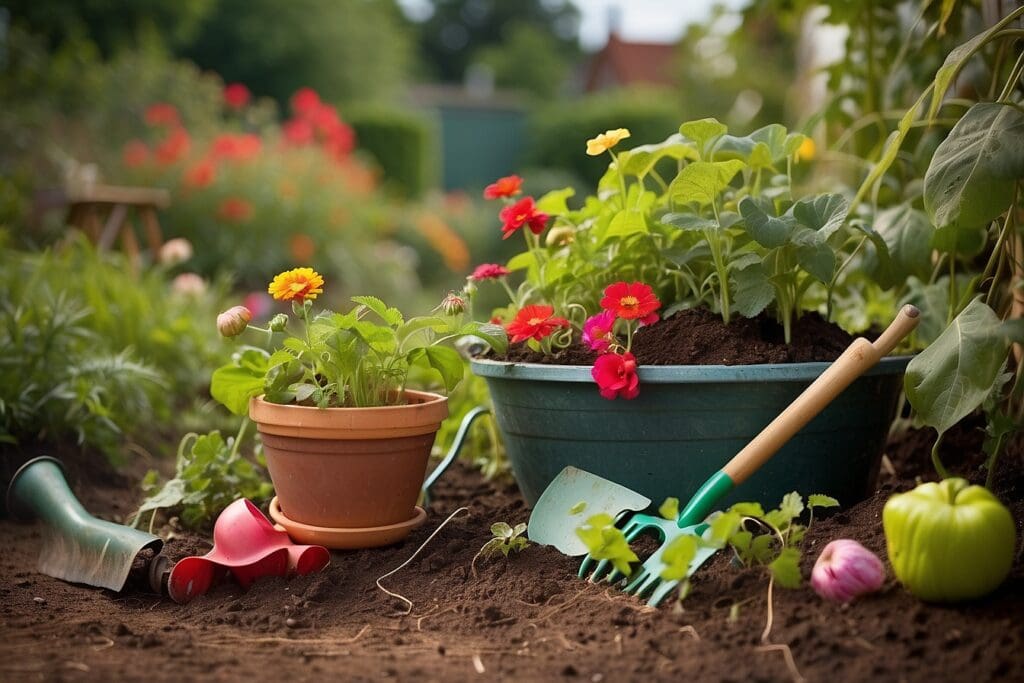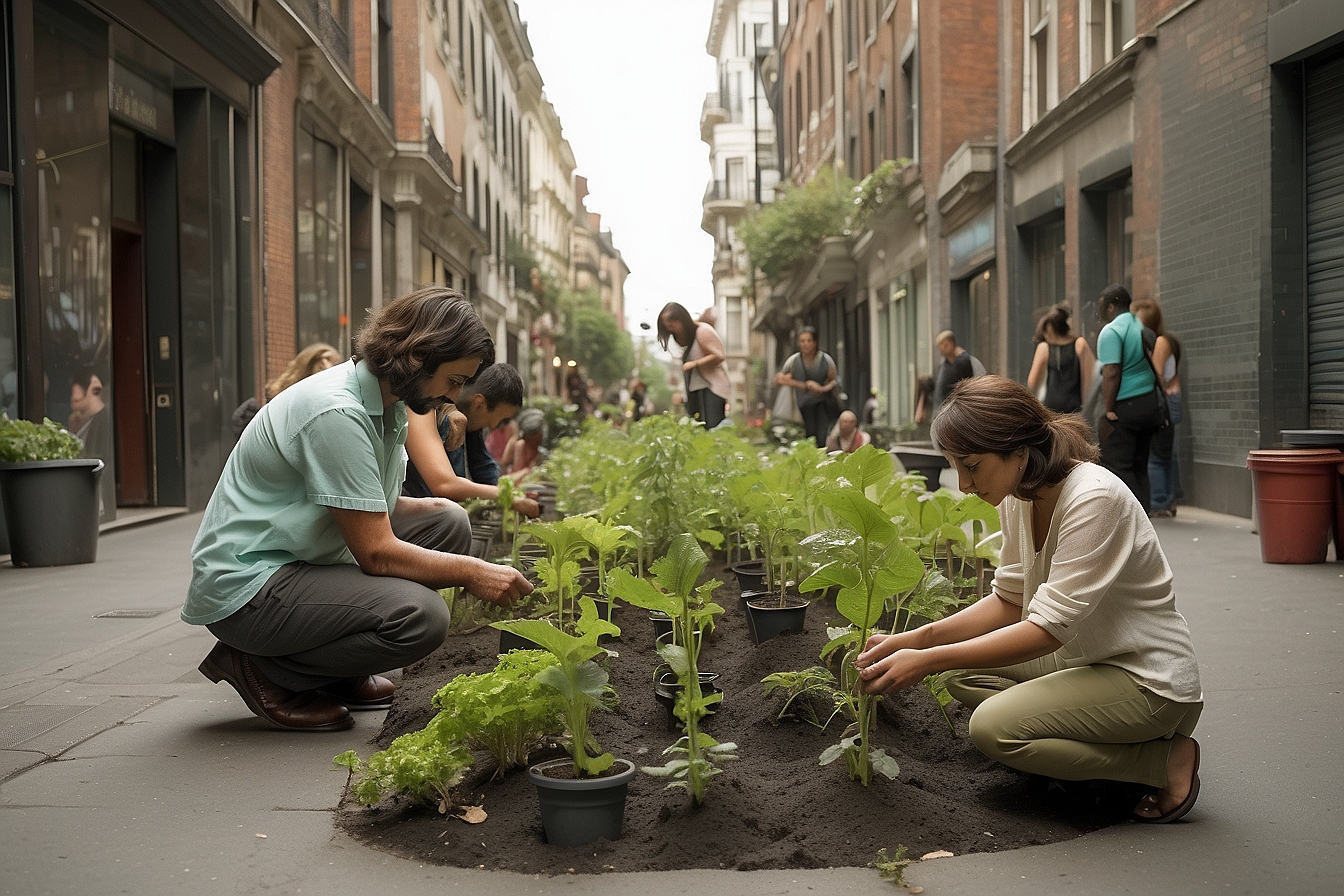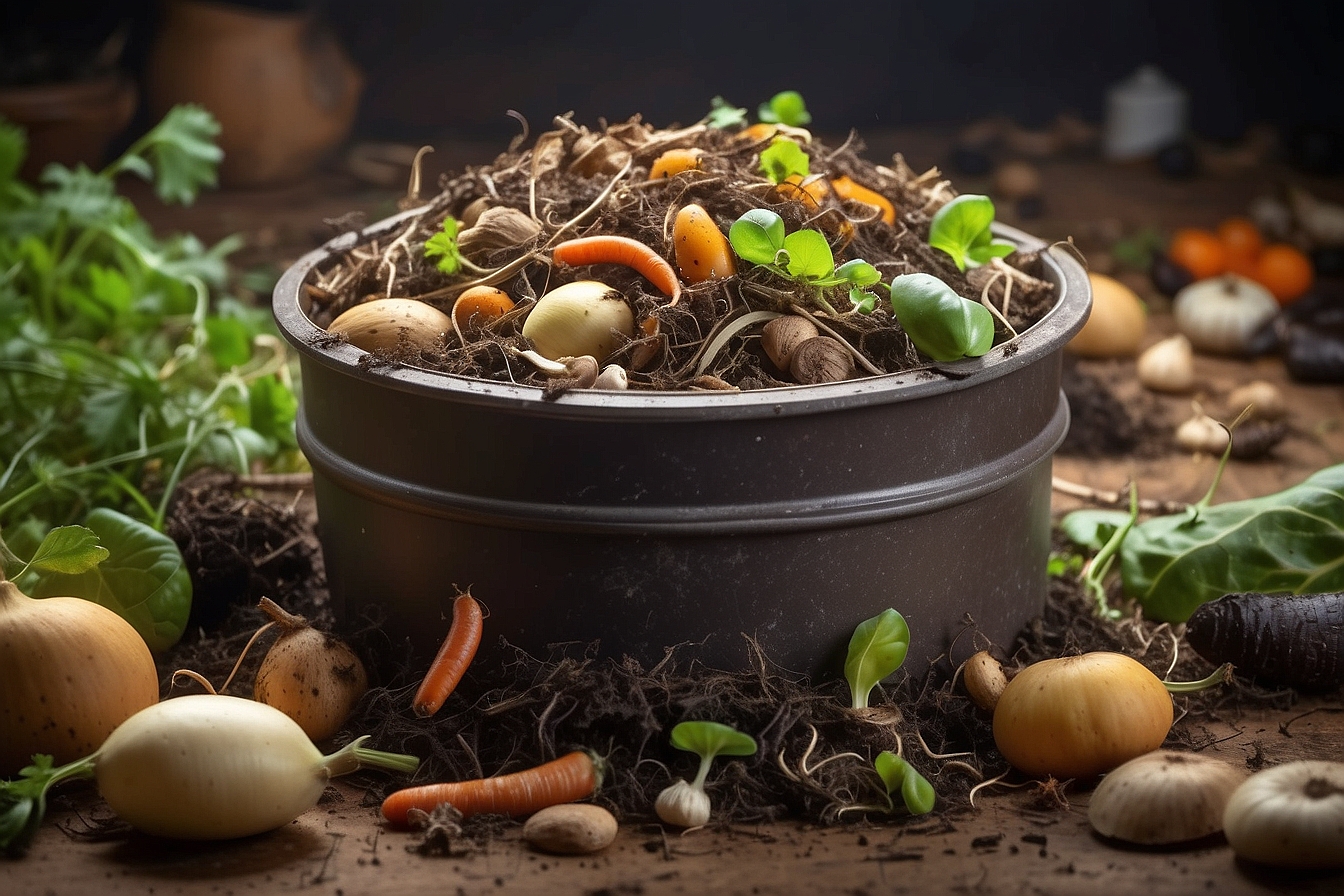It might be odd to think about, but the delicious food on your plate is closely linked to the environment. Grains, meat, fruit, vegetables, and nuts once grew in the wild as part of a natural, complex ecosystem. Although these vital ingredients still fuel modern society, the process of getting our food has changed drastically. Most urban dwellers have never grown their own meal from scratch, and wouldn’t know where to start. However, a recent wave of gardening movements has creatively rediscovered and utilized the link between food, people, and the environment to help improve city streets, mobilize communities, and alleviate hunger.

Thanks to the economic downturn, one simple idea that has been popping up all over the United States is the “recession garden”. Homeowners who find themselves on a shrinking budget decided to put their empty backyard to good use and grow fruit and vegetable gardens. Some are inspired by the Victory Gardens of WWII, when the government imposed food rations to help feed the troops at war, which forced civilians to grow their own gardens in order to feed themselves.1 Others are inspired by First Lady Michelle Obama, who planted vegetable gardens on the White House lawn to demonstrate the value of local, organic, and healthy eating.2 Of course, the large majority of people are starting gardens because they want to save money on their food bills.3
Apparently, this idea is catching on pretty quickly. This year, 19% more Americans have decided to grow their own fruits, vegetables, herbs, and berries.4 According to one study, the cost of the garden compared to the value of the return is a ratio of around 1 to 25. Talk about bang for your buck. However, those who are new to gardening will probably get a lower return than that, since they aren’t as knowledgeable about the techniques involved in gardening as are more experienced gardeners, such as timing, soil, watering, etc. Because of this, many parents are also using their “recession garden” as a tool to teach children the valuable skill of growing their own food.5
Another great idea is organizing volunteers and donors to build and fund vegetable and fruit gardens in urban areas, then donating the food they grow to feed the hungry. One non-profit organization, Urban Farming (http://www.urbanfarming.org/), does exactly that.6 Their mission is not only to plant community gardens, but to use them to eliminate hunger altogether. Sounds like a big agenda? As founder Taja Sevelle put it, “When they say it can’t be done, we say, ‘It’s already been done.’”7 During the era of the Victory Gardens, not only were individual households growing gardens in their backyards, but whole communities were forming food cooperatives and growing community gardens.8 The goal of this organization, however, is not just to feed the hungry, but also to bring the community together. Young and old residents from local ethnically diverse neighborhoods work side by side in the garden to both learn gardening skills and to help make a difference in the fight against hunger.9 Now that’s multitasking.
The last idea brings a whole new meaning to “secret garden”. This edgy gardening method is called “guerilla gardening”. The founder of guerilla gardening, Richard Reynolds, first thought of the idea in London. Stifled by the lack of gardening space in his apartment complex, Reynolds decided to search out unused plots the city where he could plant small gardens as a small beautification project. As he blogged about his adventures, gardeners around the world got inspired by his actions and decided to take subversive actions of their own. Teams of guerrilla gardeners look around the city for highly visible, yet neglected areas of the city that could be converted into attractive gardens. Then, in the middle of the night, they pick up garbage, weed the area, and plant native plants. Often, guerrilla gardeners plant fruit or nut trees so that local residents can enjoy some food while admiring the view.10 Since those who practice it must do so in secret, guerrilla gardening is literally a thankless job. But, it definitely qualifies as one of the most exciting ways to give back to the community.
Growing your own garden may sound like something that only your grandparents did, but the recent trend of environmental movements towards gardening suggests the exact opposite. Some want to eat locally grown food, some hope to feed the hungry, and some simply want create picturesque and healthier neighborhoods. While not all of them have the environment in mind, they are all working to bring the environment a little bit closer to home.





